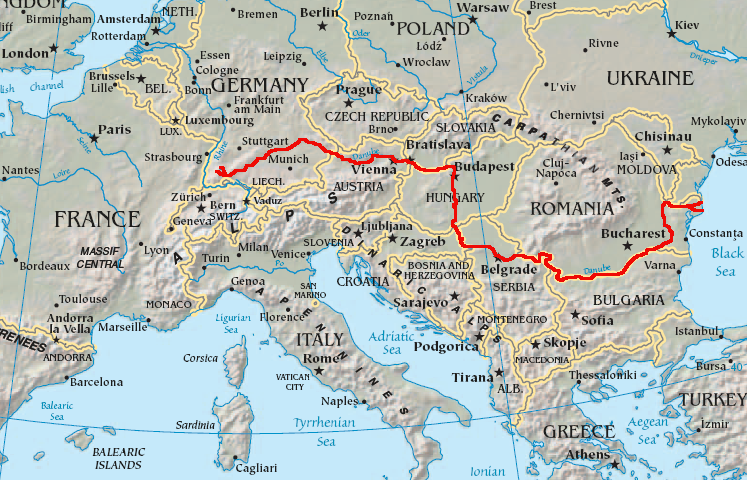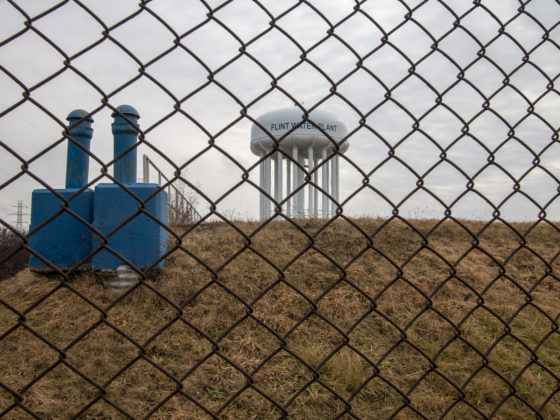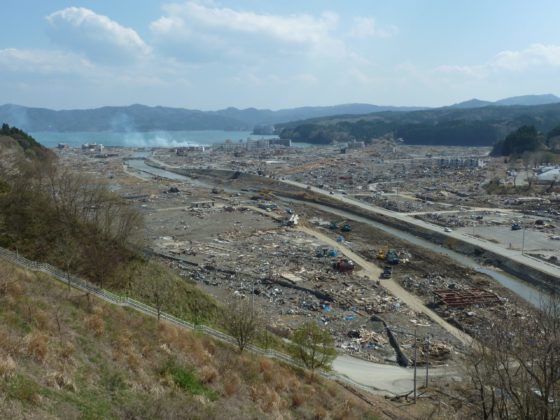Danube map, Public Domain, https://commons.wikimedia.org/w/index.php?
Ariel Dinar grew up in Israel, an arid country that depends on upstream countries for its water supply. As a farmer in a Kibbutz relying on scarce water, Dinar was very aware of how precious a resource water could be. Dinar is now the Distinguished Professor of Environmental Economics and Policy at the School of Public Policy at the University of California, Riverside, and a prolific author. He has been writing about water since the early 1980s. He has moved easily between academia and policy work (in the World Bank). With his colleague, Shlomi Dinar, they recently published International Water Scarcity and Variability: Managing Resource Use Across Political Boundaries (Oakland, CA: University of California Press, 2017). He gave a talk in the Politics Department at the University of Virginia entitled “Why Are There So Few Basin-Wide Treaties?,” analyzing the question from the perspective of coalition formation in multilateral international basins. We spoke with him.
What are international basin treaties? What do the numbers say?
Usually, we refer to international river basins as basins that are shared by two or more countries, such as the Danube basin that is shared by 19 European countries (see picture above). Another example is the Colorado River basin that is shared by 7 states in the United States and by Mexico. At present, there have been 262 international river basins identified, of which 176 are bilateral [meaning two countries share access to the basin] and 86 are multilateral [meaning at least three countries border the basin]. Transboundary, or international, basins are governed by agreements (treaties) among the riparian nations that share the basins. Such treaties have been signed as early as 1850. Treaties cover a wide range of issues, including navigation, water allocation, pollution prevention, hydropower generation, fishery regulation, flood control, and many others. Over the past 150 years, treaties have become more all-encompassing and have moved beyond the initial focus on navigation and allocation. Of the 262 international basins identified, 83 at this point do not yet have a treaty. The ones that do have a treaty vary in the number of treaties (and their revisions) they are a party to—these can be up to 10. It is important to note that in multilateral basins, treaties are not always signed by all riparians to the basin. It is actually more likely for treaties to be signed by a smaller number of the riparians that share the basin. The main reason for this is the difficulty of finding agreement when the negotiation includes many parties. However, the Danube River basin is an exceptional example of a very successful cooperation among the 19 riparian countries.
Why are international treaties important? What do we know about where they occur, and where they don’t?
Some time ago, there was a narrative developing in the public sphere that equated water and water scarcity with conflict and wars. Some United Nations officials even reinforced this notion of water and conflict. While water can be a source of tension, scholars have pointed out that water has been a cause of war only in very rare circumstances in the distant past. In light of this discussion of water and conflict, scholars have argued that the fact that riparian countries are able to sit down and agree to jointly manage the resources of the basin is important. The fact that treaties are renegotiated is also a sign of cooperation. Not surprisingly, not everyone agrees with this: it is sometimes argued that a signed treaty is not a sign of cooperation because treaties may not be successful. Moreover, as is the case with some treaties, they may not lead to the expected outcome. It is also important to remember that conflict in and of itself is not a bad sign, as long as the parties can address the tensions by means that are acceptable to all involved.
In reviewing the water treaty negotiations, we have seen many interesting ways that countries address their conflicts. Countries sometimes make side payments; they may link in issues beyond water; they may call for the joint management of the water resources; and it is not exceptional that they revisit and adjust the treaty parameters over time. At this point, we do not know what all the factors are that affect whether there will be a treaty or not. The research today on that question has identified several variables that affect the likelihood of signing a treaty. Those key variables include level of water scarcity in the basin, the particular power relations among the riparian countries, and the type of diplomatic and trade relations among the riparian countries, to name only a few.
International water treaties belong to the family of International Environmental Agreements (IEAs), which also include the various accords/protocols/agreements on climate change. While the Paris Climate Accord includes nearly 200 countries, the largest water treaty in terms of signatories is the Danube, with only 19 riparians. Because water treaties deal with a common pool resource, while IEAs deal with global public goods (or bads in case of negative externalities), IEAs are much harder to negotiate. Sources of the negative external impacts by polluters or extractors in international water are more clearly and easily identified than the damages created in the climate change case.
What is an exemplary international treaty? And where is there urgent need for a treaty?
An exemplary international treaty is of course the Danube agreement with its 19 participating countries. The negotiation process itself was designed in a way that guaranteed an acceptable agreement that includes all parties and all sectors in each riparian country. The treaty also promotes educational activities in the basin, with the goal of increasing cooperation among the parties. It is harder to answer where a treaty is most needed. I would say that international water treaties are most needed in regions where there are existing protracted tensions and conflicts beyond the conflict over scarce water, such as the basins of the Nile, the Euphrates-Tigris, and the Ganges. In addition, treaties are urgently needed in regions where climate change may further affect water scarcity, such as in the Mekong, the Nile, and the Colorado.
For those interested in more reading:
Ariel Dinar, Shlomi Dinar, Stephen McCaffrey, and Daene McKinney, Bridges over Water: Understanding Transboundary Water Conflict, Negotiation and Cooperation, 2nd ed., World Scientific Series on Energy and Resource Economics, vol. 11 (New Jersey: World Scientific Publishers, 2013).





